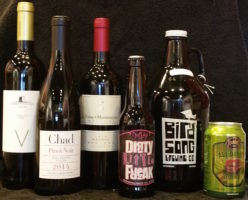 In my last post I wrote about connecting with middle class communities. In it I acknowledged:
In my last post I wrote about connecting with middle class communities. In it I acknowledged:
It’s a nearly unaddressed issue within the nonprofit arts industry that we are widely viewed as elitist and irrelevant to “the person on the street.” Overcoming that impression will take commitment and a considerable amount of conversation up front.
There are, of course, many sources of that view of irrelevance. Perhaps it’s the proximity of the Holidays, but this very quickly led me to an old concern of mine that is highly class based.
Why is our industry so closely tied to wine and cheese?
This is a deep-seated impression both in the public’s mind and in ours. And on one level it may be trivial; on another it does kind of speak volumes.
Several weeks ago, I mentioned the Sun Valley Arts Center holding a kegger for the construction trade workers it invited to view an exhibition of fine woodworking by an internationally renowned artist. (It was a highly successful event.) I remember when I first presented the example I was struck (almost unconsciously) by the image of a keg at an arts event. Hmmm.
The cultural and social implications of the wine and cheese mindset are not inconsiderable. What about beer, and not just as an after-thought to the brie and cabernet? I’d encourage those who have not done so to take a weekend afternoon and go to a craft brewery or tap room. You will find one of the demographics you are desperately seeking–young professionals, with and without children.
At the same time I acknowledge that the craft beer industry is not without its issues and cultural stereotypes (here’s a valuable perspective for those interested in that topic: https://www.thrillist.com/drink/nation/there-are-almost-no-black-people-brewing-craft-beer-heres-why). But thinking about this might be a worthwhile place to begin.
So, craft beer may not be of great interest to the middle class or working class but it would probably be more attractive than sauvignon blanc. The details can be put off for discussions with them. But craft beer is attractive to young white professionals.
Food, er, beverage for thought.
Engage! (with appropriate spirits)
Doug
Photo: random selection from my personal stock as of this date.

Have you considered that the role of art as a luxury may occasionally be a structural component of belief? What I’m wondering is whether for some people the most that can be experienced about art is its value as entertainment and that this may be symptomatic of a deeper world view. Are our beliefs about art necessarily only about art, or do they sometimes reflect other fundamental assumptions we have about the way the world works? Is that why some people feel the arts are a luxury? Are the non-entertainment values of art accessible to everyone equally or is that merely a pleasant dream? Does having certain beliefs preclude us from entertaining others? If you don’t believe art is capable of being more than entertainment how does that color your perception? Is how we feel about the arts sometimes part of a deeper belief system and not necessarily negotiable?
If any of these questions merit our attention we seem to be at a crossroads for both who we are attempting to reach and what means we use in doing so. Any thoughts?